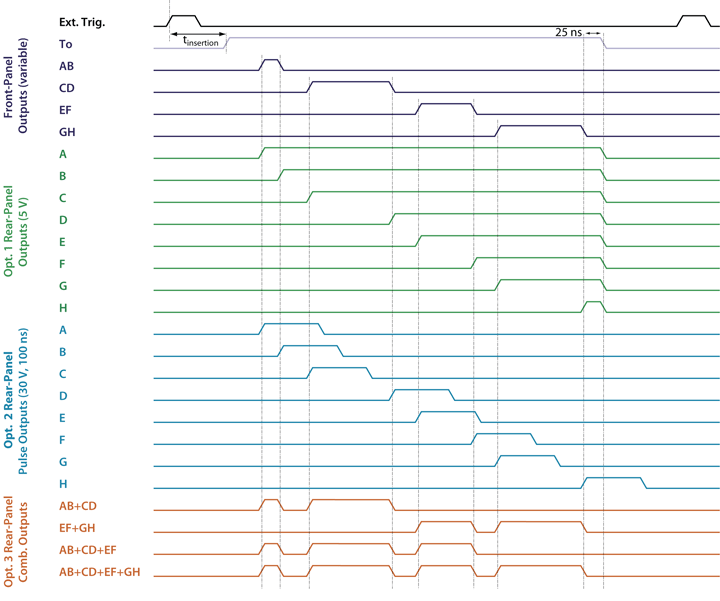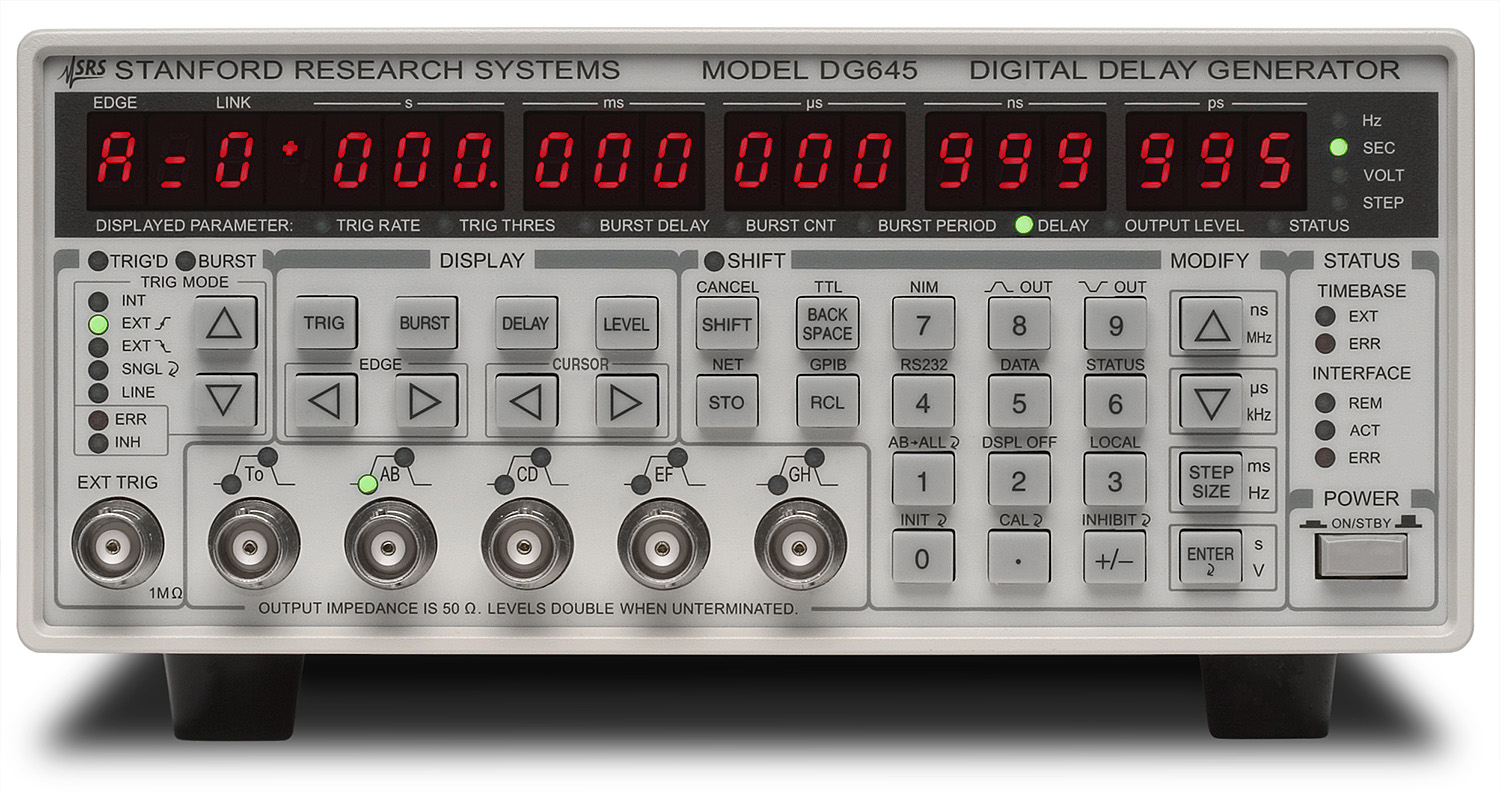Try a power-up reset. Turn the power off, then while holding the BACK SPACE key down, turn the power back on. After two seconds release the BACK SPACE key. If this doesn't correct the problem the instrument will need to come back to SRS for service. Click here to get an RMA number.
DG645 Digital Delay Generator is a precision 8-channel delay generator that can output arbitrary delays from 0 to 2000 s with 5 ps resolution. The DG645 includes an internal rate generator that provides triggers at rates of up to 10 MHz. However, under default settings the DG645 will generate rate errors for trigger rates above about 8.7 MHz. Furthermore, even if every delay is set to 0 ns, the DG645 will generate rate errors for trigger rates above about 9.5 MHz. This sets an upper limit for the effective maximum trigger rate for the DG645.
The reasons for this are discussed below.
The maximum trigger rate that the DG645 can handle is governed by three parameters: the insertion delay, the longest programmed delay, and the reset time. The timing diagram presented summarizes the relationships between these three parameters.

The insertion delay is the fixed delay from when a trigger is applied to the external input to when T0 fires. For the DG645 this insertion delay is about 85 ns. The DG645 provides 8 channels of programmed delay, labeled A through H. On the front panel, adjacent delays are combined to provide the rising and falling edges of a pulse. These outputs are identified in the diagram as AB, CD, EF, and GH. For computing the maximum acceptable trigger rate, only the longest programmed delay is relevant. In the diagram, channel H has the longest programmed delay. The final component to consider is the reset timing. This is the time it takes the DG645 to reset its circuitry and arm it for the next trigger. For the DG645 this is about 25 ns. The minimum period between triggers is given by:
Tcycle = Tinsertion + Longest Delay + Treset
= 85 ns + Longest Delay + 25 ns
= 110 ns + Longest Delay
If we set all delays to 0 ns, the longest delay will be 0 ns. In this case, the minimum Tcycle = 110 ns, which corresponds to a maximum rate of about 9 MHz. Using the formula above, the user can predict the maximum acceptable trigger rate for any given set of programmed delays.
There is one special circumstance where the DG645 can accept triggers at a rate exceeding 10 MHz. This is when bursts are used. The nsertion delay between triggers of a burst is shorter than the insertion delay of the first trigger. This makes it possible to process N burst triggers at a rate exceeding 10 MHz. However, successive triggers of the burst will have to obey the normal timing presented above.
3) Upgrading your instrument with option 1, 2 or 3
If you want to upgrade your DG645 with an optional output (Opt. 1, 2 or 3), you can either send your instrument back to SRS for service or you can try installing the option yourself.
Click here to download the installation procedure. You will need to call SRS at 408-744-9040 or email us at info@thinkSRS.com to place your order for the optional output board.
4) Upgrading your instrument with option 4 (OCXO)
If you want to upgrade your DG645 with the optional OCXO timebase, you can either send your instrument back to SRS for service or you can try installing the option yourself.
Click here to download the installation procedure. You will need to call SRS at 408-744-9040 or email us at info@thinkSRS.com to place your order for the optional OCXO.
5) Problem communicating over ethernet with a direct connection from my DG645 to the TCP/IP port on my computer
Click here to download instructions on TCP/IP communication using a direct connection from your DG645 to your computer.
6) Problems setting up the single rack mount kit
Click here to download instructions on setting up the single rack mount kit.

